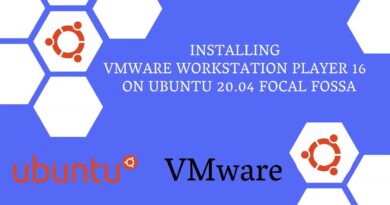Linux🐧Audio🎧Conference🎙️2019💻FAUST MASS-INTERACTION PHYSICAL MODEL🐉MasteringSurpriseByNTVMAEBUS
FORMALIZING MASS-INTERACTION PHYSICAL MODELING IN FAUSTSunday,
https://faust.grame.fr/
https://faust.grame.fr/community/made-with-faust/mi-faust/
https://faust.grame.fr/community/made-with-faust/
http://www.mi-creative.eu/paper_lac19.html
http://www.mi-creative.eu/
https://github.com/mi-creative
https://www.youtube.com/channel/UCRuUSYlxXxXJEySt3RszDuA/
Sunday, March 24 — Scientific Track
12:00 PM – 12:30 PM
https://lac.linuxaudio.org/2019/
Proceedings of the 17 th Linux Audio Conference (LAC-19), CCRMA, Stanford University, USA, March 23–26, 2019
Linux Audio Conference 2019 March 23-26, 2019 — CCRMA, Stanford University (USA)”In Ping(uins) we trust”
About
After seven years outside of the United States, Linux Audio Conference (LAC) took place at Stanford University on March 23-26, 2019 for its 17th edition! LAC is the international conference about Free/Open-Source Software for music, sound, and other media with GNU/Linux as the main platform.
https://lac.linuxaudio.org/2019/
🎧🎶MasteringSurpriseByNTVMAEBUS 🎙️🔊
▶️🆓 📹 📺🎚️🎙️Mastering-Surprise 🎧
https://sites.google.com/view/ntvmaebus-newttritonvmastering/mastering-surprise
🌐🗺️👂🔊🎚️🎛️🎤Online-Mastering 🎧
https://sites.google.com/view/ntvmaebus-newttritonvmastering/online-mastering
Original Video
https://lac.linuxaudio.org/2019/doc/leonard.pdf
ABSTRACT
This paper presents recent work conducted on the integration of
mass-interaction physical models in the FAUST programming language.
After a brief introduction to mass-interaction networks,
FAUST, and previous works on this topic, we present a simple modeling
framework, a FAUST code generator and its associated library,
allowing to implement 1D mass-interaction models. In addition to
the open-source tool itself, this research offers a perspective on formalizing
arbitrarily large networks of bidirectional feedback couplings
and state-space models in FAUST, through routing patterns.
We finish with a set of examples, and discuss future perspectives and
challenges.
1. INTRODUCTION
For several decades, physical modeling has been used to synthesize
audio by means of simulating the behaviour of vibrating objects. A
panoply of methods have been proposed over the years, from lumped
discrete models [1], to Waveguides [2], to large scale Finite Difference
schemes [3], that have gained in popularity with the increase
of computing power. Creating a model of a mechanical instrumental
system can be simpler than explicitly formulating the signal that it
produces (as sound properties emerge from the physical conditions
of the matter) and offers direct means for control and interaction, either
by simulating musical gestures or by coupling the user and the
virtual object, for instance using haptic technologies [4].
FAUST [5] is a functional programming language for real-time
Digital Signal Processing (DSP) with a strong focus on the design of
synthesizers, musical instruments, audio effects, etc. The FAUST
compiler can be used to “translate” a FAUST program to various
non-domain-specific-languages such as C++, C, JAVA, JavaScript,
LLVM bit code, WebAssembly, etc. Thanks to a wrapping system,
code generated by FAUST can be easily compiled into a variety of objects
ranging from audio plug-ins to standalone applications, smartphone
apps, web apps, etc.1 This mechanism also makes it possible
to add MIDI, OSC, polyphony, etc. support to any FAUST-generated
program.
…
https://faust.grame.fr
https://github.com/grame-cncm/faustlibraries
https://github.com/mi-creative/MIMS
https://faust.grame.fr/tools/editor/
https://faust.grame.fr/community/
…
5. FUTURE WORKS
5.1. Faust
FAUST proves to be well adapted to implement mass-interaction
physical models. The combination of connection matrices and of
the use of the letrec environment expression allowed us to seamlessly
implement the various elements of mi.lib. However, this
raised some issues that will need to be solved in the future. They are
presented below.
5.1.1. Specifying Initial States in letrec
5.1.2. Optimizing Routing Matrices
6. CONCLUSIONS
In this paper, we have presented early results of formal integration
of 1D mass-interaction physical modeling into the FAUST environment,
resulting in a new library. The MIMS and physics2faust tools
allow to automatically generate FAUST dsp code for complex topological
models, by expliciting the routing scheme for the model’s
position and force signals. Several basic models have been implemented
and benchmarked, showing promising results. Furthermore,
FAUST’s capabilities offer an efficient solution for playing several
dynamically allocated and parameter-mapped instances of a physical
model across large ranges. More generally, this work extends beyond
mass-interaction modeling and explores the possibilities for describing
complex feedback networks and state space-models in FAUST.
linux foundation



